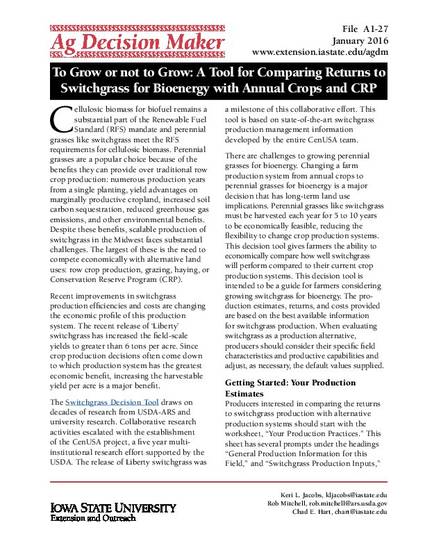
Article
To Grow or not to Grow: A Tool for Comparing Returns to Switchgrass for Bioenergy with Annual Crops and CRP
Ag Decision Maker Information Files
Extension Number
A1-27
Description
Cellulosic biomass for biofuel remains a substantial part of the Renewable Fuel Standard (RFS) mandate and perennial grasses like switchgrass meet the RFS requirements for cellulosic biomass. Perennial grasses are a popular choice because of the benefits they can provide over traditional row crop production: numerous production years from a single planting, yield advantages on marginally productive cropland, increased soil carbon sequestration, reduced greenhouse gas emissions, and other environmental benefits. Despite these benefits, scalable production of switchgrass in the Midwest faces substantial challenges. The largest of these is the need to compete economically with alternative land uses: row crop production, grazing, haying, or Conservation Reserve Program (CRP).
Rights
Works produced by employees of the U.S. Government as part of their official duties are not copyrighted within the U.S. The content of this document is not copyrighted.
Publication Date:
1-1-2016
Publisher:
Iowa State University Extension and Outreach
Language
en
File Format
application/pdf
Citation Information
Keri Jacobs, Rob Mitchell and Chad Hart. "To Grow or not to Grow: A Tool for Comparing Returns to Switchgrass for Bioenergy with Annual Crops and CRP" Ames, IA(2016) Available at: http://works.bepress.com/chad-hart/105/
